To download this eBook Click here —
A Handbook for Regulating Hog Confinements
Table of Contents
Introduction
Chapter 1 – Unintended Health and Environmental Consequences of CAFO Agriculture
Chapter 2 – Iowa DNR lawsuit documents
Chapter 3 – Legislative language grassroots campaign
Epilogue – Transition to clean agriculture document
Introduction:
This handbook is a request, and a how to, for help in a grassroots campaign to regulate hog confinements in Iowa. Chapter 3 will give you legislative language that, if adopted, will regulate the discharge of manure pollution from the air avenue of hog confinements. State law now says all manure must be retained in the hog confinement between disposal events. But, the courts have said that is only for the water pollution avenue of confinements. This campaign is about including the other pollution avenue, the air avenue, in that law.
It is our hope that you will use this language to help in a grassroots campaign to convince sitting legislators to adopt and introduce this air avenue language, and/or, to elect legislators who would be in favor of this language. This language, if adopted, will help protect the health of Iowans who live, work, and study in proximity to hog confinements.
Chapter 1 is our powerpoint presentation: “Unintended Health and Environmental Consequences of CAFO Agriculture.” Chapter 2 contains the documents of our recent lawsuit against the Iowa DNR.
Between the powerpoint and the DNR lawsuit documents, you can get a pretty good understanding of what hog confinements are, why they produce the human health problems they do, what those health problems are, and why we have had such a hard time getting anything done to protect humans from hog confinement pollutants and toxins.
The powerpoint explains hog confinement technology, what that technology is, how that technology affects the hog’s waste as it breaks down in an anaerobic (sewer) environment, and explains the human health harming constituent parts that waste produces as it breaks down in this sewer environment. Those human health harming constituent parts of manure are vented or blown out into the surrounding neighborhood and larger environment 24/7/365.
When reading the DNR lawsuit documents, start by reading the media guide pdf. The media guide document has notes in the margin that will help you understand what we are doing and why we put together the lawsuit the way we did. The last page of the media guide is the template we had to follow in order to make our request of the DNR for a declaratory order. That template will explain what we are about in the document when it says “this addresses template number such and such.”
We changed the lawsuit, but not in any real way. We simply left out the original step of trying to get the DNR to agree with us and issue a declaratory order using our wording to protect the public’s health. Instead, we skipped that step and asked the DNR in our lawsuit to “retain” all excreta/waste/manure, and the constituent parts of that manure, that the code/law says it is supposed to do. As it is written today, the code/law regulations leave out the pollution coming out of the air avenue of hog confinements. It only regulates the water pollution avenue. The existing code/law language led to the dismissal of our DNR lawsuit, and, led to this grassroots campaign to get language in the regulations which includes the air avenue and would regulate the human health harming pollution coming out of the air avenue
The lawsuit documents, along with the Jillian Fry 2014 Johns Hopkins study used in the main lawsuit document, will also help you understand why opponents of hog confinements have had such a hard time making any headway in protecting the public’s health. It shows that the regulatory scheme leaves out humans, hence there are no laws pertaining to the effects hog confinement waste has on people.
This legislative language effort is a particular effort using hog confinements to fight against the larger general problem of pollution from this industrial model of agriculture. It is what we can do today to lessen the inherent pollution problems coming from the use of this industrial model of agriculture that is dominant in the US today.
The epilogue in this booklet is a “transition to a clean agriculture” document. This document shows where we can, and should, go in the future in terms of having a clean and healthy agriculture in Iowa. The legislative language grassroots campaign is a particular effort. The transition document is a general effort toward a future clean and healthy agriculture.
This transition to a clean agriculture document is also being proposed as a symposium for the Iowa Academy of Science 2020 Annual Conference. Because all the agricultural crops and cropping systems discussed in the transition document exist today, the symposium will stipulate that the transition to a clean agriculture has already been completed. The presenters will then be asked to tell how that transition was accomplished from their research perspective, and/or, what Iowa is like now that we have transitioned to a clean and soil rejuvenating agriculture. It is important to let people know that this future can exist today, show them what it can be like, and let them know that we do not need to continue with this inherently polluting industrial model of agriculture to feed ourselves.
The printed booklet will have links to the full version e-book at the appropriate places. All of the documents in the book, our lawsuit documents, and the 867 peer-reviewed journal studies we cite to justify our positions will be in the full e-version book.
We hope you find this book/e-book informative. We also hope that you will use this information to help with this grassroots campaign to regulate Iowa hog confinements. If you invite us to visit your group, we will discuss how best to use this information locally, and answer any questions you may have about any of the information we have given you.
Since this book is, and contains, the ask of your help with this grassroots effort, we will not be charging for the printed version. We will ask for a freewill donation if you want to help with the printing costs. The e-version is free and printable from the website: www.civandinc.com and click on the book title.
Bob Watson
2736 Lannon Hill Rd
Decorah, IA 52101
563-379-4147
Larry Stone
23312 295th Street
Elkader, IA 52043
563-419-6742
Dick Janson
119 North Mill Street, Apt. Q
Decorah, IA 52101
563-382-6088
Chapter 1 – Unintended Health and Environmental Consequences of CAFO Agriculture

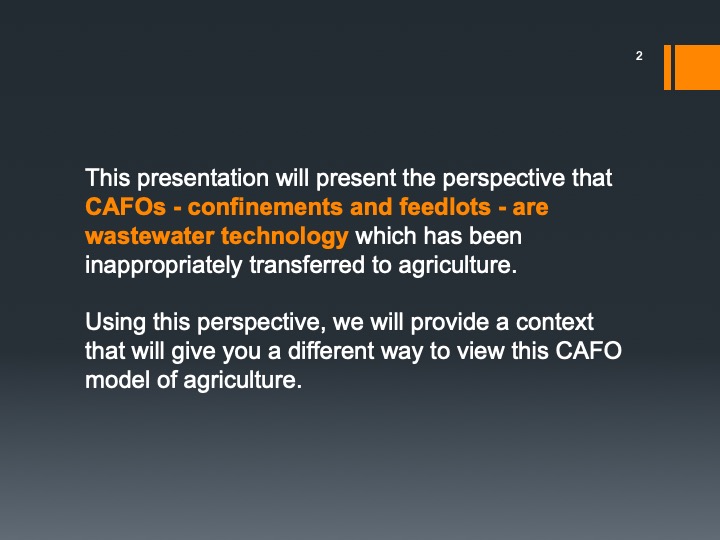
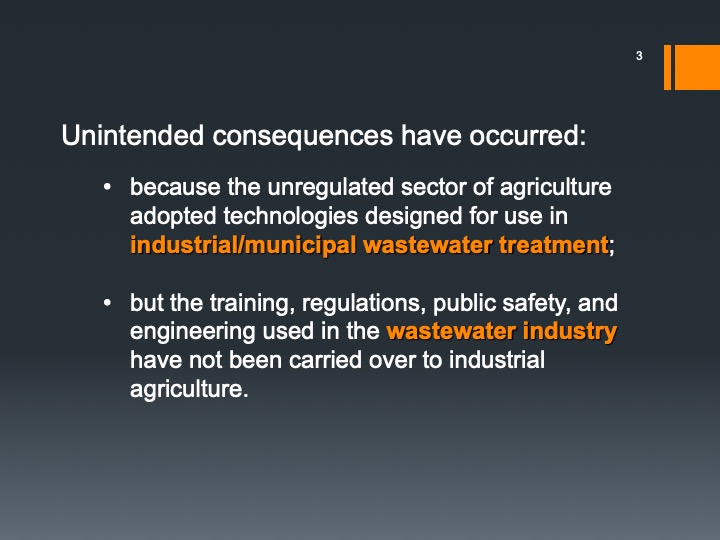

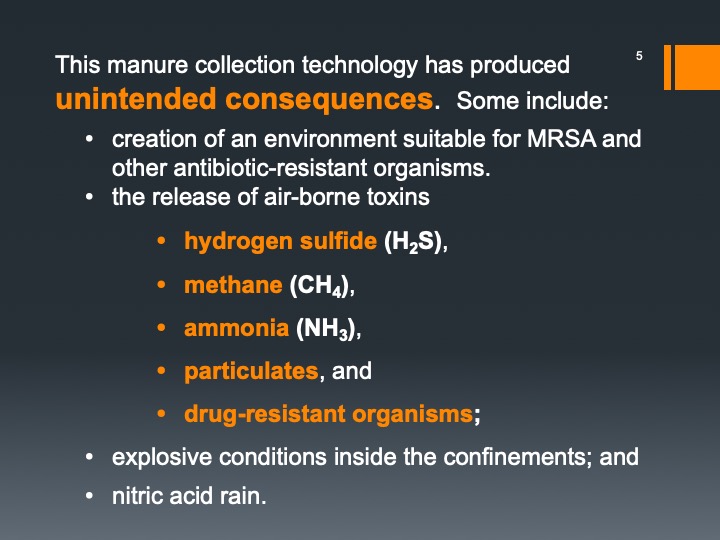
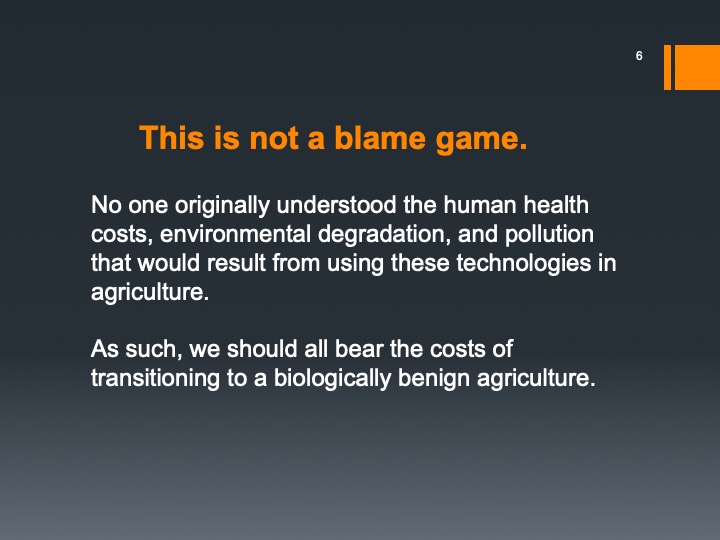
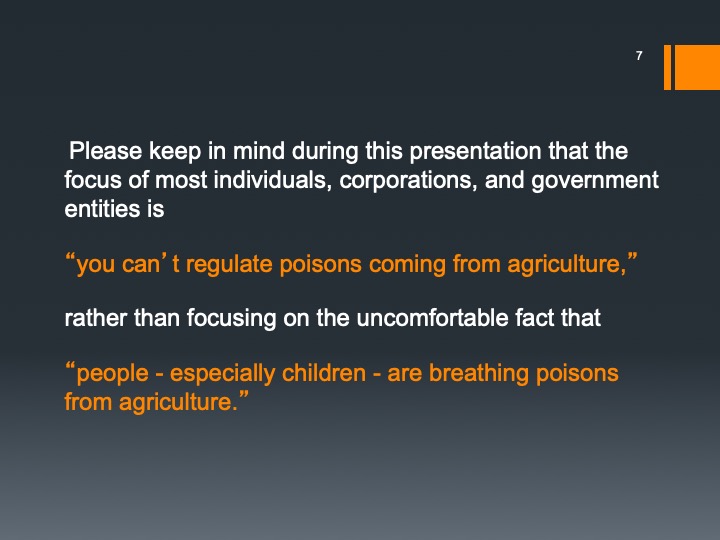
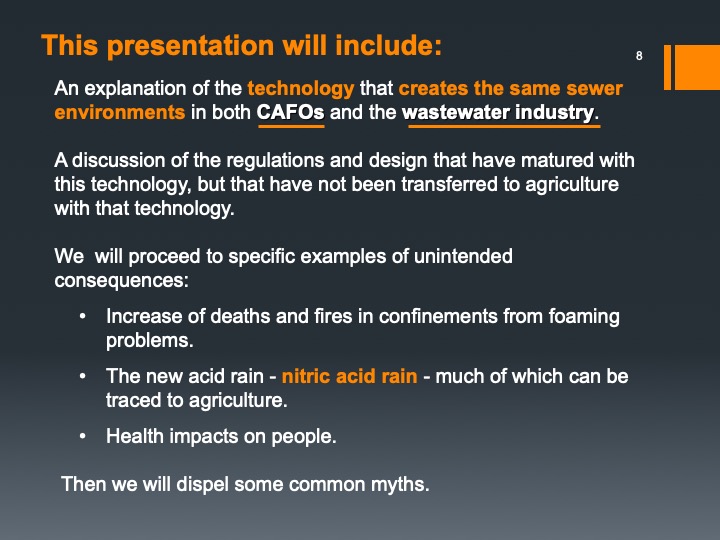

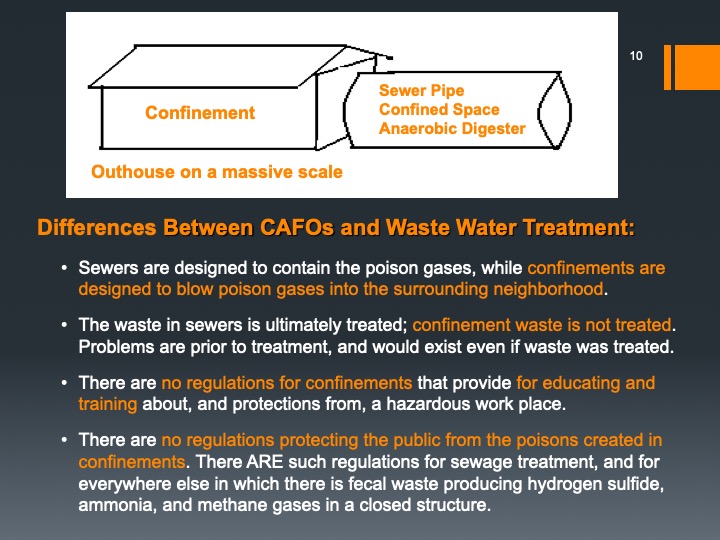
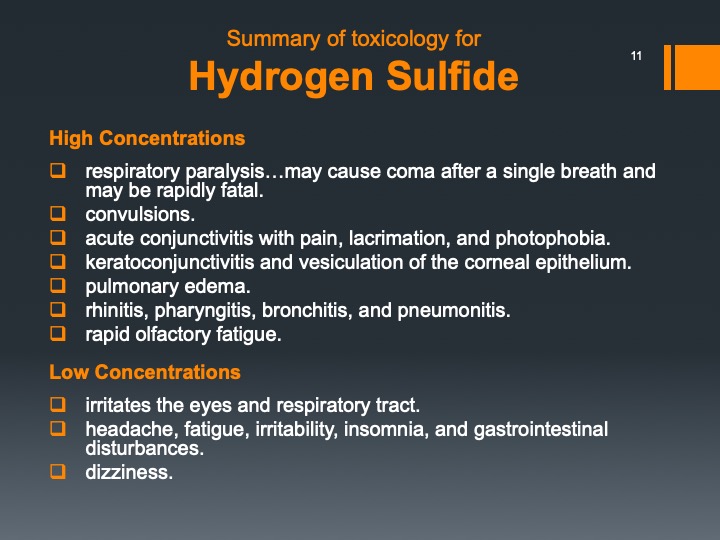
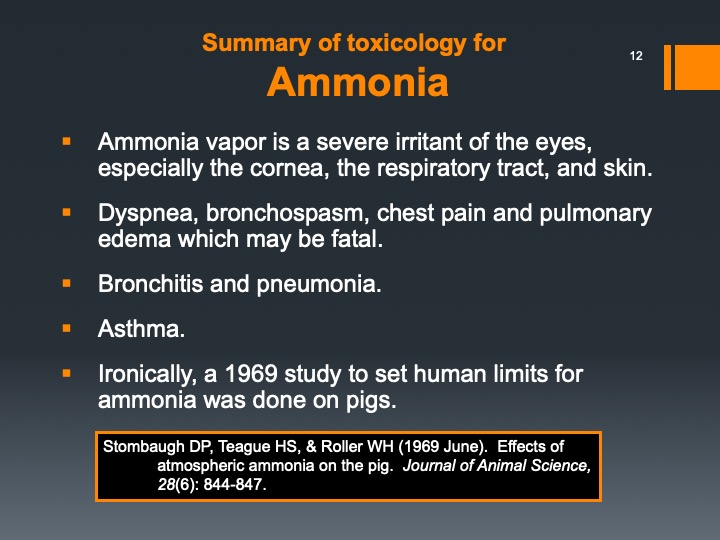
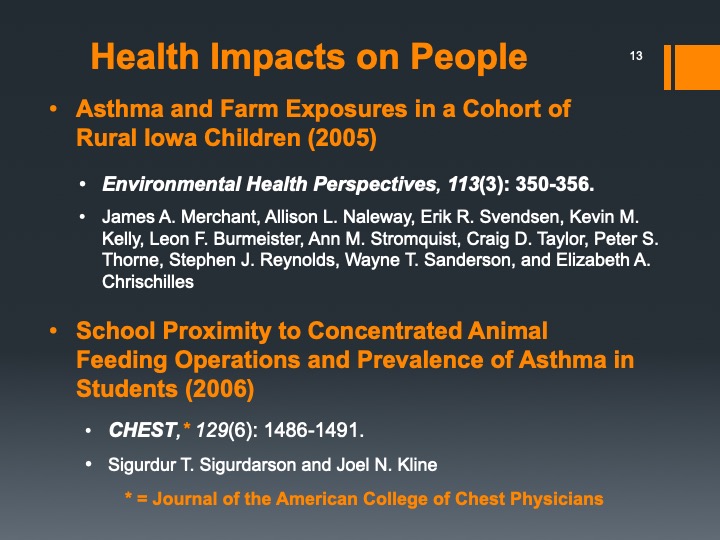
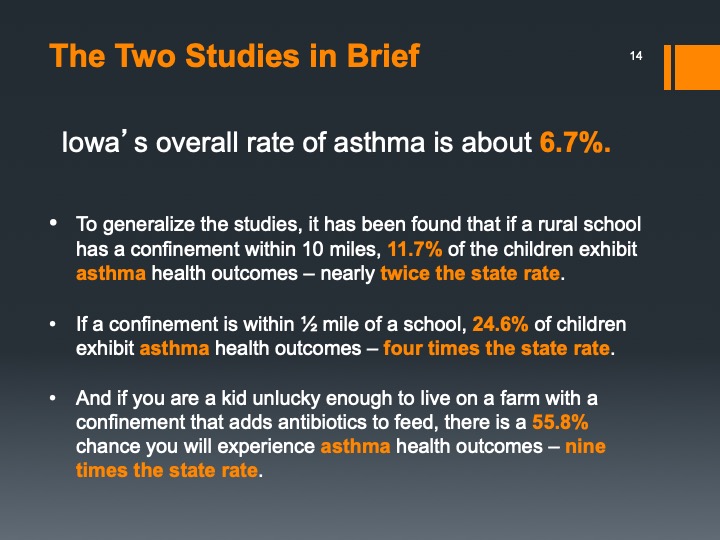

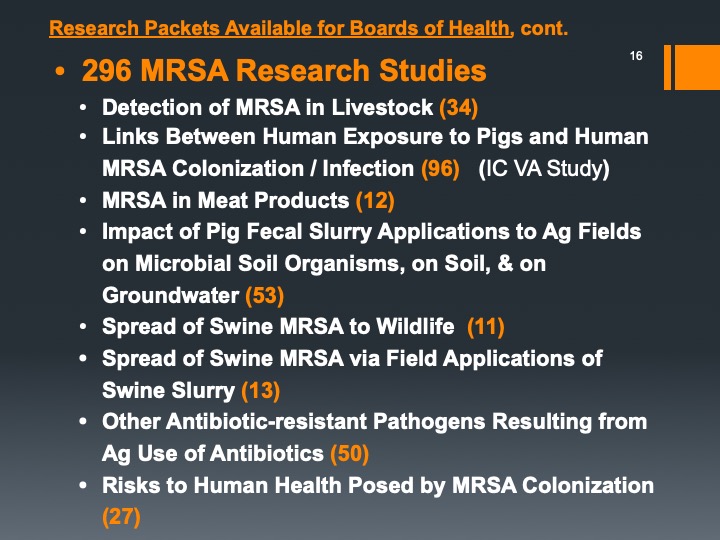
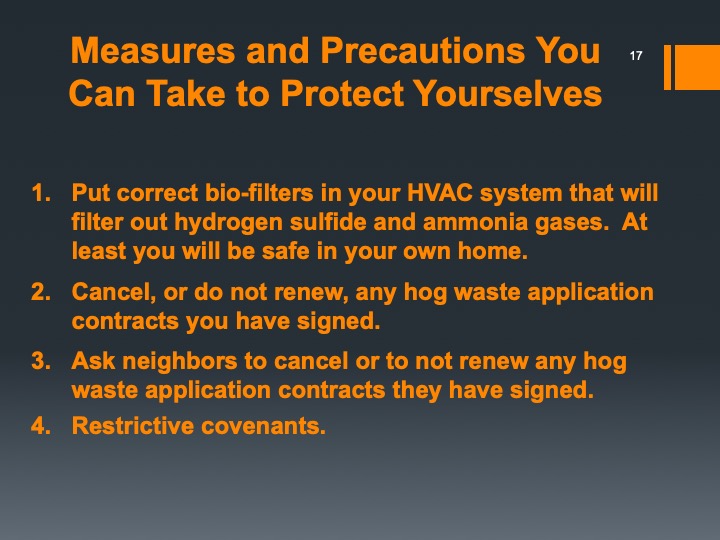
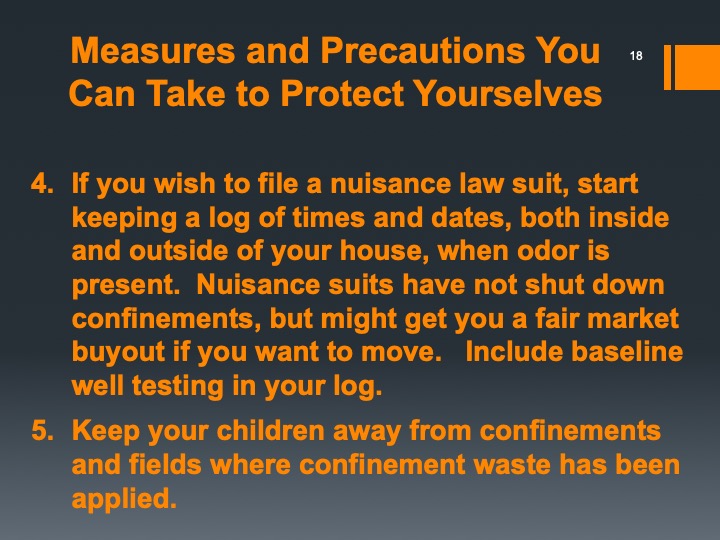

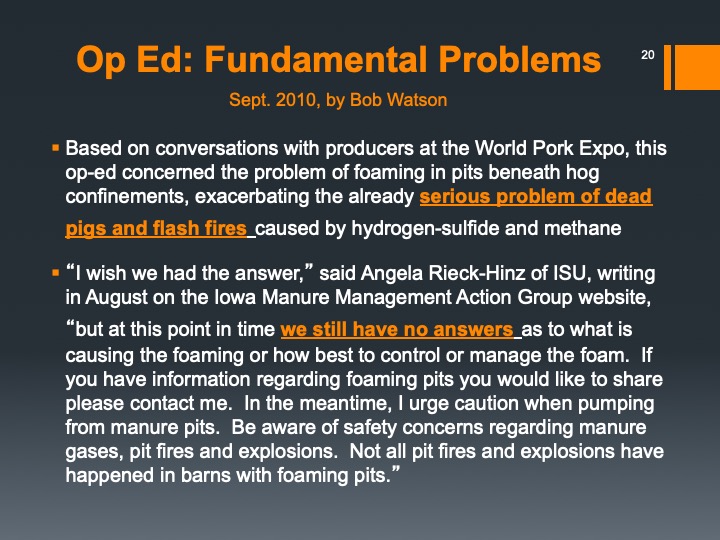
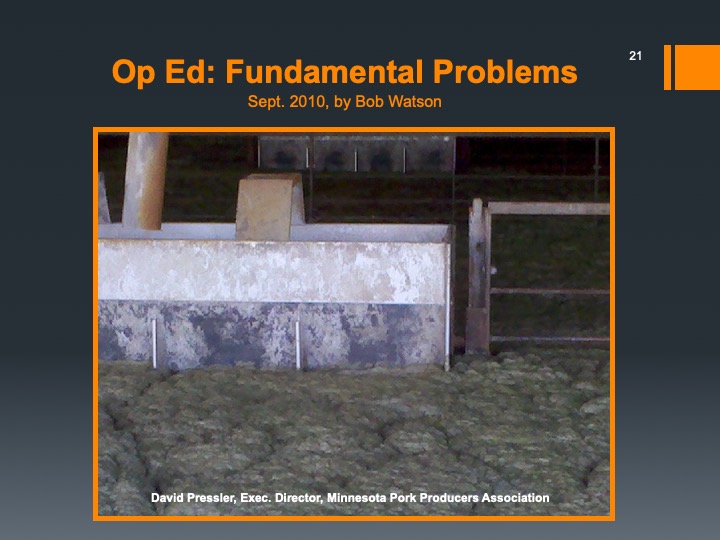

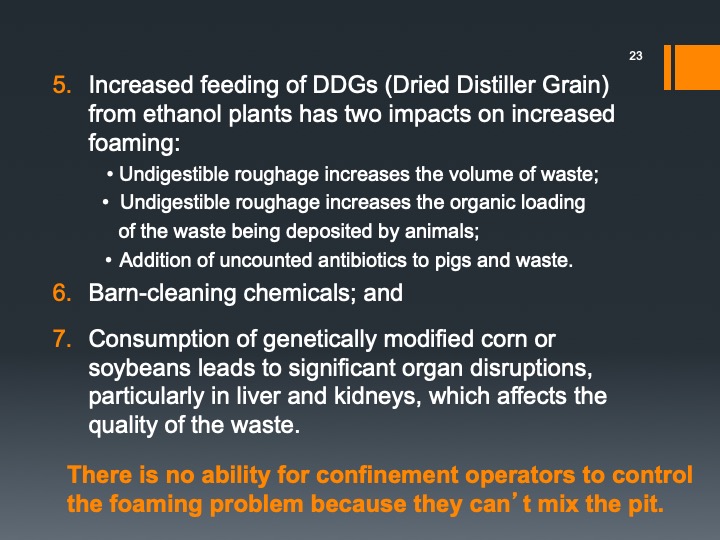
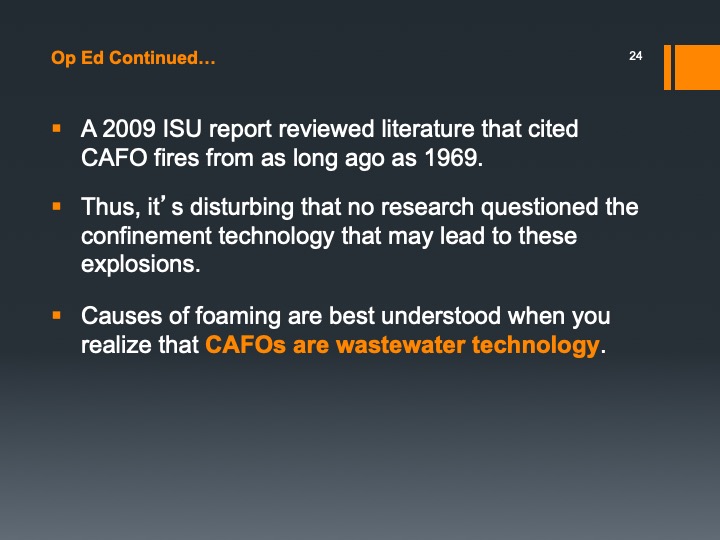
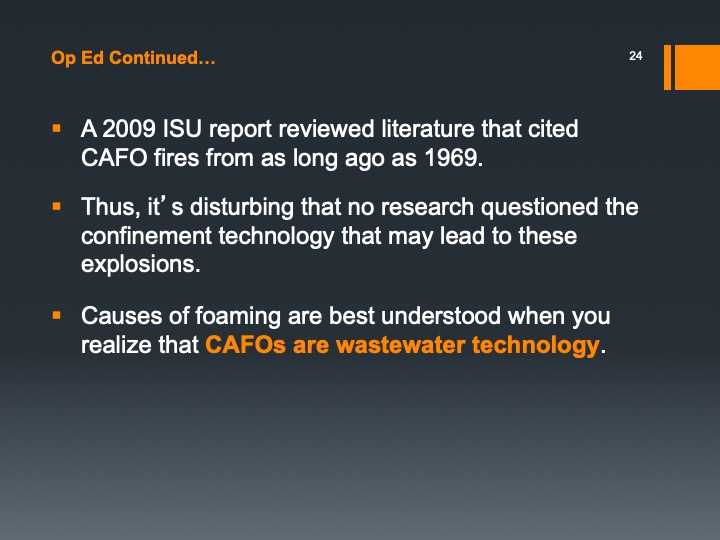
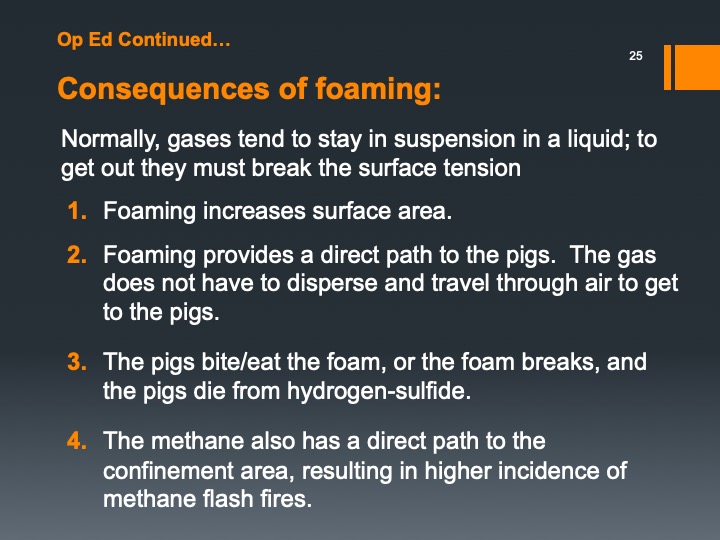
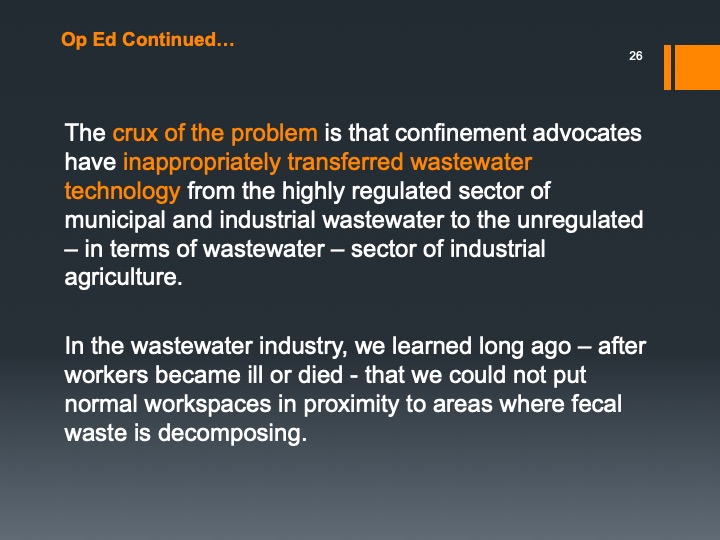
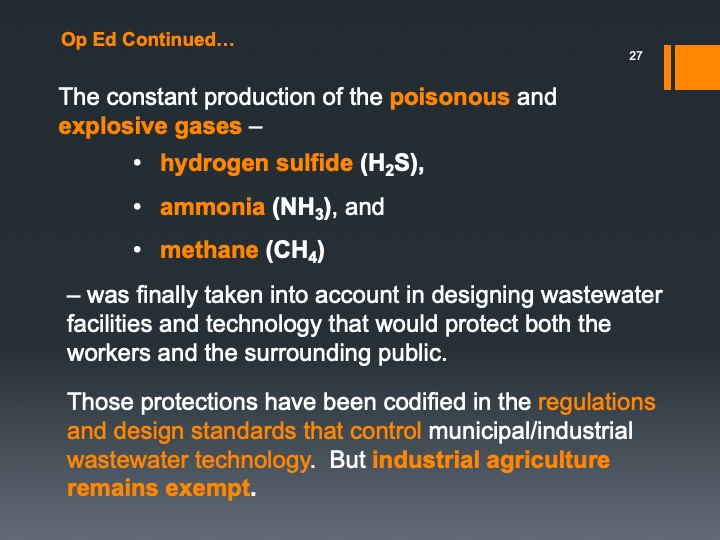
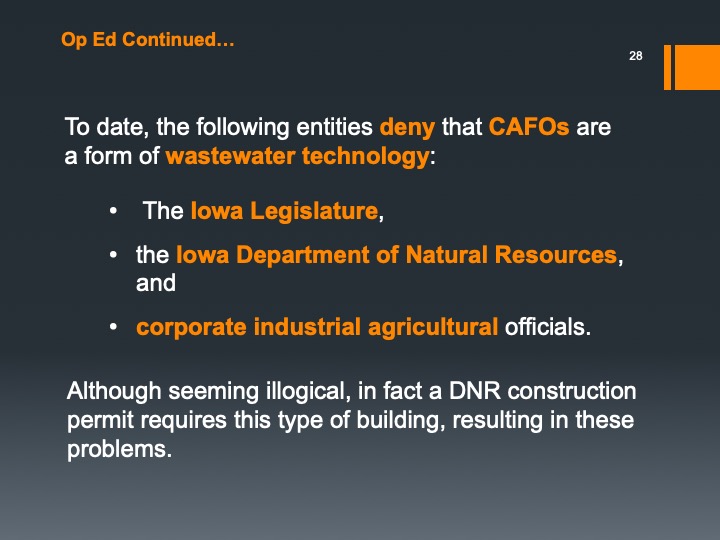
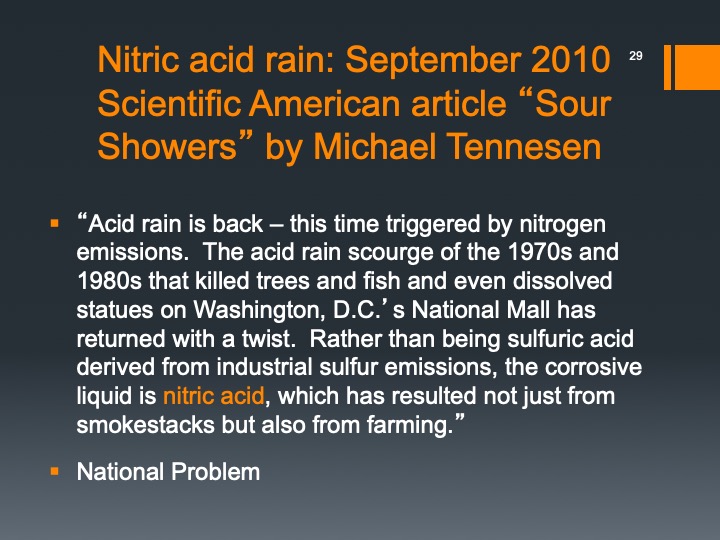

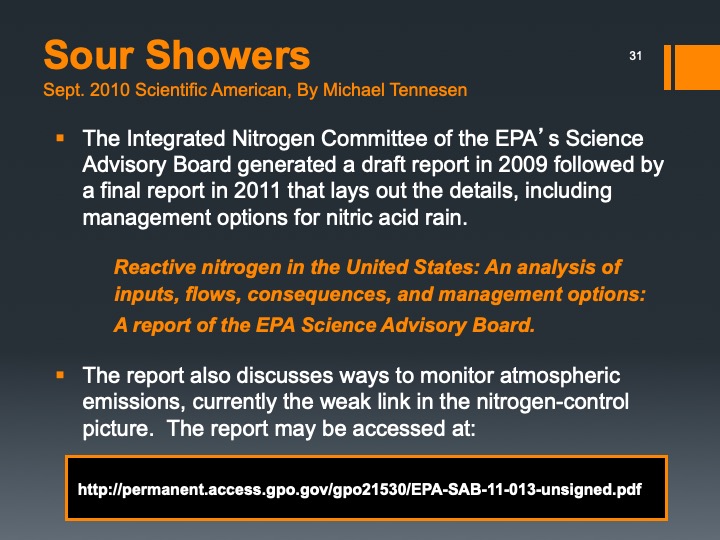



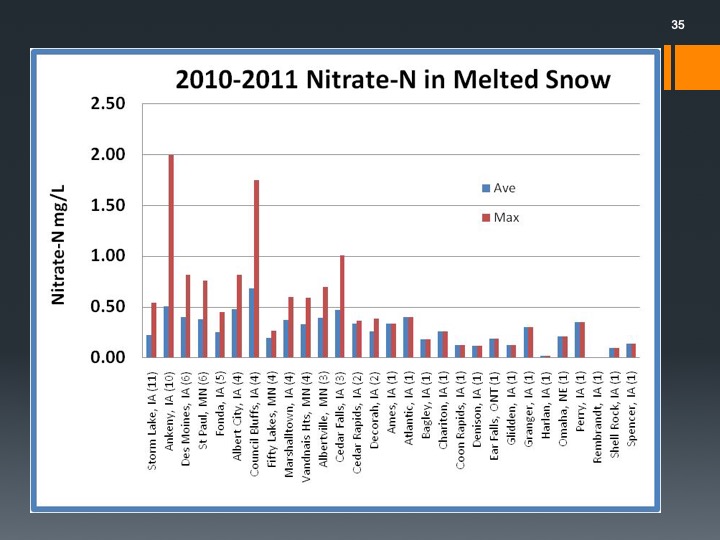

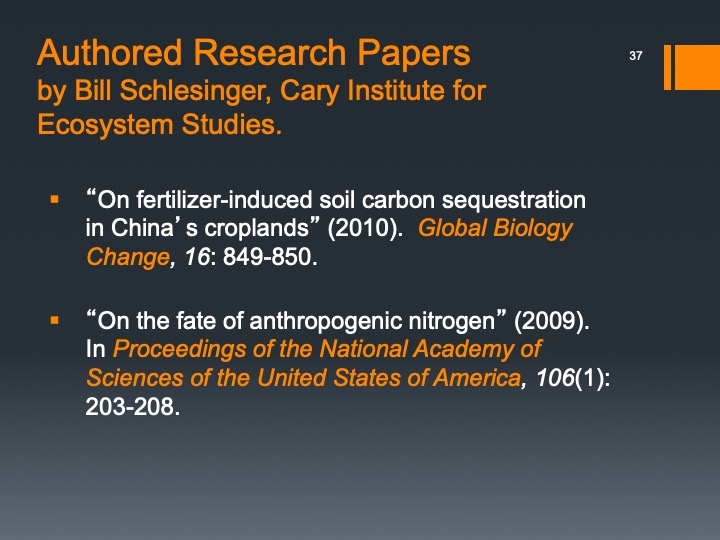

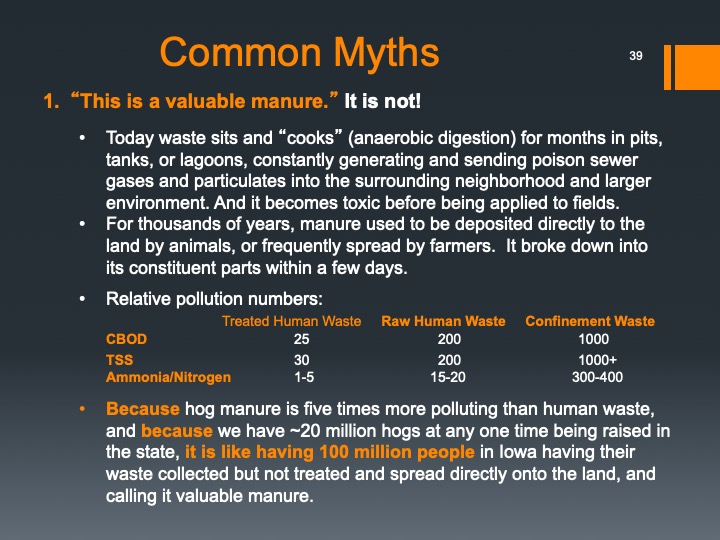
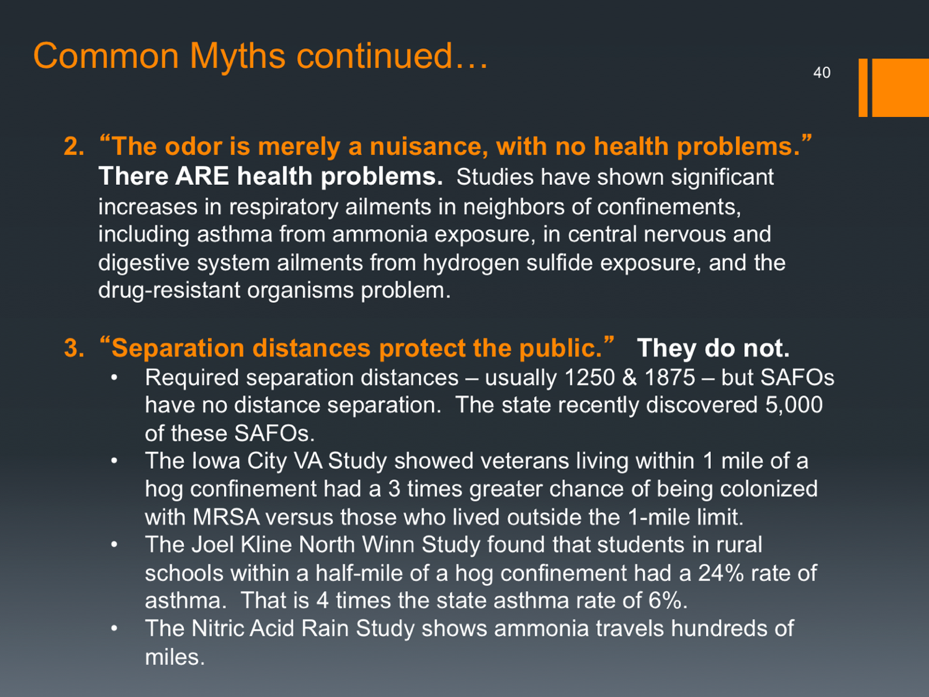
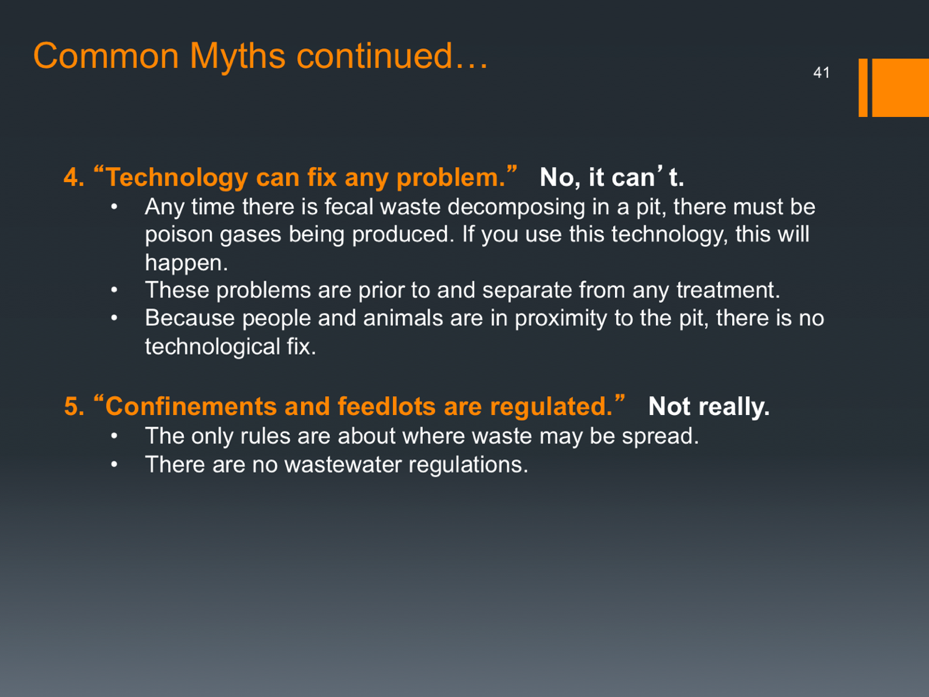

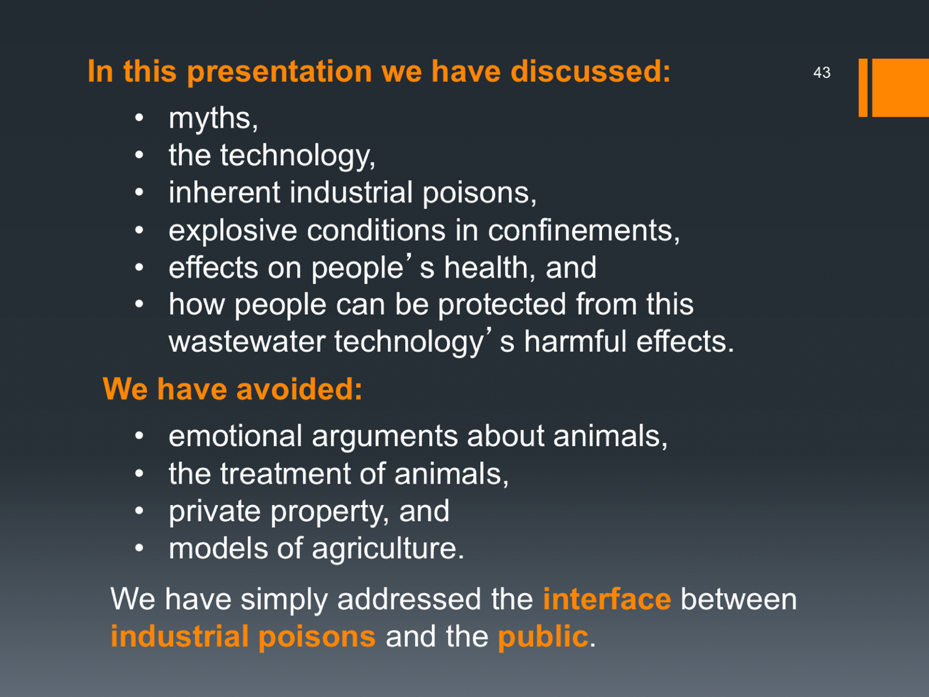
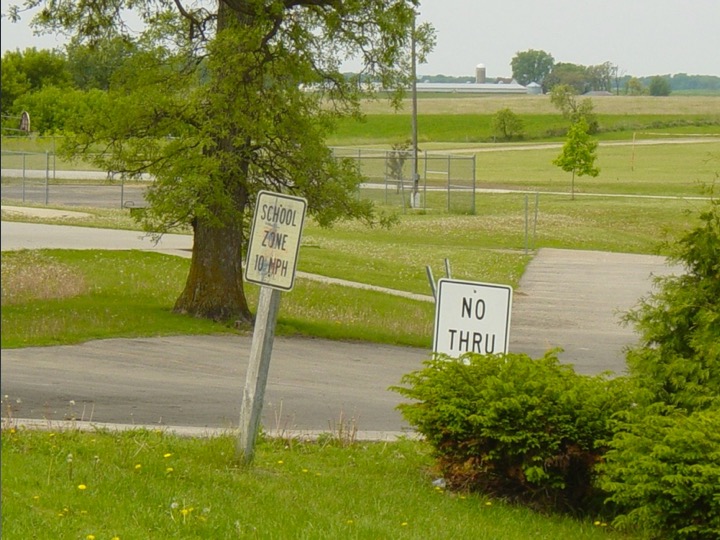
Chapter 2 – Iowa DNR lawsuit media guide document Click Below:
All civandinc documents:
https://drive.google.com/drive/folders/16JSVu2yMOKrVjajcmTudqT5eurkbkbDC
Clicking on the above Links opens a new tab and presents documents in google drive. When complete simply close the google drive tab.
Chapter 3: Legislative language
In this chapter we give you legislative language based on our DNR lawsuit. Please use this language in a grassroots campaign to try to convince sitting legislators to adopt and introduce this language, and/or, to elect legislators who would be in favor of this language. This language, if adopted, will help protect the health of Iowans who live, work, and study in proximity to hog confinements.
The language would propose that all excreta and its constituent parts be retained in the confinement building between disposal events. This is currently the case in Iowa law for the water pollution avenue for excreta (the State’s name for manure), but is not the case for the air pollution avenue.
The proposed language would be about regulating excreta that escapes confinements through the air avenue. The State says they regulate the water avenue (this is pretty weak), but they say the air avenue can’t be regulated; this was the reason our DNR lawsuit was dismissed. The air avenue is the more dangerous pollution avenue. If it is read correctly, the State’s definition of excreta ends up saying that everything in a hog confinement except the pigs is excreta; we explain this in the DNR lawsuit document. That means that all of the lethal and toxic gasses, particulates, and antibiotic-resistant organisms that are constituent parts of the excreta as it collects and breaks down and leaves the confinement through the air avenue are excreta, too.
In the water avenue, the state says that all excreta must be retained in the confinement between disposal events. The disposal event would be the pumping out and land applying the excreta every six months to a year. This is why the State is able to call these hog confinements “no discharge buildings” and therefore say they don’t need NDPES permits (national permits which have limits on the discharged pollution).
There is no regulation of excreta and its constituent parts coming through the air avenue. The State says that their separation distances, normally some 2000 feet more or less, protect the public’s health. This is demonstrably false which our studies and our powerpoint show. The hog confinement air avenue pollution which consists of the constituent parts of excreta that include gasses, particulates, and antibiotic-resistant organisms, can travel up to hundreds of miles.
Our proposed legislative language: “All hog confinement excreta and its constituent parts must be retained in the confinement between disposal events. No excreta, or its constituent parts, may leave the hog confinement either through the water pollution avenue, or the air pollution avenue, between disposal events.”
Again, please use this language to help in a grassroots campaign to convince sitting legislators to adopt and introduce this air avenue language, and/or, to elect legislators who would be in favor of this language. This language, if adopted, will help protect the health of Iowans who live, work, and study in proximity to hog confinements.
Epilogue
Transition to a clean agriculture.
This document stands on its own as an op-ed. But it is also being proposed as a symposium for the 2020 Iowa Academy of Science Annual Conference April 17, 2020 at Drake University in Des Moines, Iowa.
This document shows where we can, and should, go in the future in terms of having a clean and healthy agriculture in Iowa. The legislative language grassroots campaign is a particular effort to end some industrial agriculture pollution. The transition document is a general effort toward a future clean and healthy agriculture.
For the IAS symposium, because all the agricultural crops and cropping systems discussed in the transition document exist today, the symposium will stipulate that the transition to a clean agriculture has already been completed. The presenters will then be asked to tell how that transition was accomplished from their research perspective, and/or, what Iowa is like now that we have transitioned to a clean and soil rejuvenating agriculture. It is important to let people know that this future can exist today, show them what it would be like, and let them know that we do not need to continue with this inherently polluting industrial model of agriculture to feed ourselves.
Recently on MN public radio Dr. Mark Hyman of the Cleveland Clinic was talking about “functional medicine” as a medical paradigm shift where it is the whole body’s health and the health of the environment that needs to be done correctly to avoid negative human health issues instead of treating separate organs and symptoms. This might be a good follow-on, or even stand-alone, keynote for the IAS Conference about what Iowan’s health could be like if Iowa transitions to a clean agriculture. Hyman has been doing functional medicine for 20 years. This is the link: https://www.mprnews.org/story/2019/08/21/dr-mark-hyman-on-personalized-health .
Transition document:
This current “how do we get rid of industrial agriculture’s pollution” conversation is actually pretty ridiculous when you consider the means are at hand to do this virtually immediately. The means are there, the will is lacking.
Hundreds of years to attain just a 45% reduction of this industrial agriculture pollution based on the pace that is actually being done by farmers through the voluntary Iowa Nutrient Reduction Strategy? Really?
Industrial agriculture’s inherent pollution is existential for humans in terms of climate change, water pollution, air pollution, soil pollution and soil loss, wildlife pollution, environmental pollution, and animal and human health-harming pollution.
Instead of Iowa being the epicenter of this existential pollution, with a few simple changes to our agriculture Iowa could be a carbon sink, a water cleansing filter, a wildlife center especially for pollinators, a resource for manufacturing products, a resource for healthy human food, and an environment that is conducive to human health.
Below is the “what to do.” The “how” is the discussion that will be difficult. It will be difficult because of entrenched forces, and entrenched visions of the future. This transition assumes that mindsets must change, that the Farm Bill must change, and that the government must be involved to achieve the magnitude of changes envisioned to attain this transition to a “clean agriculture” and a “livable world” going forward.
Transition to a clean agriculture:
1. It seems that we have many reports about how Iowa’s modern industrial agriculture is not working correctly to clean up its pollution. But, we don’t have many reports about transitioning to an Iowa agriculture that would result in Iowa becoming a carbon sink, an offset carbon trading bank, a water cleansing sponge, a pollinator, wildlife, and aquatic habitat. These things all would happen while growing small grains, vegetables, and fruits for people-food along with providing crops for manufacturing goods which would revitalize rural Iowa, and would be an agricultural system that would begin to replenish our soils.
2. Even if we transitioned slowly away from industrial row crop corn and beans, and confinements and feedlots, by using long crop rotations, by mandating and paying for 10% of all row crop fields to have the prairie STRIPS system, and mandating, where possible, that most Iowa county road ditches and Iowa Drainage District ditches were planted to prairie, we would have the ability to get rid of approximately 90plus% of current soil loss, nitrogen pollution, and phosphorus pollution coming from row crop fields today. We could start achieving that next year if we wanted.
3. If Iowa planted prairie as an agricultural crop, we would be a carbon sink, we could be a carbon offset bank for trading carbon offsets, and our farm environment would become a water cleansing sponge helping to reduce flooding and providing habitat for pollinators, wildlife, and aquatic species.
4. Hemp would be similar to prairie in that it is a cover crop with deep roots. But hemp can also be used for thousands of products, both food and manufacturing, that can help revitalize rural Iowa’s small communities since hemp is a bulk commodity that would need to be processed locally. We have had hemp factories in Iowa in the past.
5. Small grains, vegetables, fruits, Wes Jackson’s perennial polyculture grains, and other people-food crops and cropping systems could become part of an agriculture which looks to benignly, in terms of pollution, feed Iowa, the Midwest, and the US instead of the current polluting industrial agricultural products mainly grown for bio-fuels and the export market.
6. The world now produces enough food through grains to feed double our current population. By encouraging eating lower on the food chain and raising meat animals on the land only for the US, we would no longer need the confinements and feedlots that are polluting Iowa’s air, water, and soils, and negatively affecting our human health.
This is Iowa’s choice. Will we continue to be an existential threat to human life on earth through the industrial model of agriculture now prevalent in Iowa, or will we be part of the solution to that threat?
